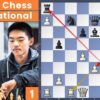The sting of defeat is a familiar sensation for the U.S. Ryder Cup team, a recurring narrative that unfurled once more at Bethpage Black. With an overall record that has seen the Americans concede victory in eleven of the last fifteen encounters, the recent 15-13 loss to Europe serves less as a shock and more as a stark reaffirmation of a deep-seated conundrum. Despite boasting a roster consistently teeming with individual brilliance, the collective synergy required for this unique match-play event frequently eludes them. The burning question remains: what truly ails the American Ryder Cup effort, and how can they finally forge a path to sustained success?
Europe`s Winning Formula: A Masterclass in Team Dynamics
To understand the American predicament, one must first appreciate the European blueprint. Under the astute leadership of Captain Luke Donald, who has now guided his team to back-to-back victories, Europe embodies a cohesive unit far greater than the sum of its parts. Their success isn`t accidental; it`s the product of meticulous planning, deeply ingrained camaraderie, and a shrewd understanding of team match play.
- Strategic Depth: Figures like Edoardo Molinari, serving as a vice-captain and statistics guru, provide an analytical edge that optimizes pairings and strategies. This isn`t just about putting good players together; it`s about finding symbiotic relationships.
- Continuity and Experience: Past captains and seasoned players remain actively involved, fostering a culture of shared knowledge and purpose. This institutional memory is invaluable, ensuring lessons learned are lessons applied.
- Unifying Spirit: Beyond the numbers, there`s an intangible European spirit – a sense of playing for the badge, for each other, and for the continent`s golfing legacy. Rory McIlroy, Tommy Fleetwood, Jon Rahm, and others exemplify this fierce yet unified resolve.
This contrasts sharply with what often appears to be a more ad-hoc American approach, where individual stars are expected to coalesce into a formidable team without the same foundational support or shared history.
The American Achilles` Heel: A System in Need of Overhaul
The issues plaguing the U.S. team are multifaceted, touching upon leadership, player adaptation, and even the fan experience.
The Captaincy Conundrum
The selection of a Ryder Cup captain should be a cornerstone of long-term strategy, not an eleventh-hour scramble. The revelation that Keegan Bradley, a rookie captain, was considered only after Tiger Woods declined the role due to other commitments speaks volumes. While Bradley acknowledged his own learning curve, particularly regarding course setup, the process itself suggests a lack of foresight.
One might almost suggest a “Captain-in-Waiting” program is needed, ensuring a dedicated individual has ample time to immerse themselves in the role, studying strategies, building relationships, and perhaps even understanding that home-course advantage means shaping the battlefield to your strengths, not just showing up.
The calls for a more structured, long-term commitment from future leaders, potentially including a two-year immersion period, are not mere suggestions but necessities if the U.S. wishes to match Europe`s consistent generalship.
Individual Brilliance vs. Team Synergy
Perhaps no player embodies the American paradox more acutely than Scottie Scheffler. As the world`s top-ranked golfer, his individual dominance is unquestionable. Yet, his 0-4 record in team matches at Bethpage Black highlights a critical flaw: individual prowess doesn`t automatically translate to match play, especially in foursomes (alternate shot) and fourballs (best ball). Even legends like Tiger Woods and Phil Mickelson, despite their individual major hauls, carried less-than-stellar Ryder Cup records. This isn`t a critique of their talent but an observation of the different “muscle” required for team golf.
The Europeans, conversely, often pair their top players, almost guaranteeing points. The sight of McIlroy with Fleetwood or Rahm with Tyrrell Hatton wasn`t just about star power; it was about proven, complementary partnerships that are battle-tested and strategically deployed.
Squandered Home Advantage and Unruly Crowds
A Ryder Cup at home should be a fortress, an undeniable advantage. Yet, the U.S. squandered this at Bethpage Black, failing to set up the course to their players` strengths. This tactical oversight is perplexing, particularly when facing a European team that meticulously tailors course conditions to their advantage when hosting.
Furthermore, the atmosphere at Bethpage, described as a “drunken fraternity party,” reflected poorly on the event and arguably hindered focus. While passion is commendable, decorum is paramount. As the comparison to Augusta National suggests, controlling crowd behavior is achievable and essential for maintaining the integrity and focus of such a high-stakes competition.
The Road Ahead: Adare Manor 2027 and Beyond

The next Ryder Cup at Adare Manor in Ireland in 2027 presents another daunting challenge for the Americans. They haven`t won on European soil since 1993 – a streak of seven consecutive away losses. While Adare Manor is a parkland-style course, potentially more “American” in setup than traditional links, the emotional and strategic home advantage will firmly rest with Europe, who will undoubtedly maximize every edge to achieve a coveted three-peat.
A glimmer of hope appears on the horizon for 2029 at Hazeltine National Golf Club in Minnesota, where the U.S. famously broke a losing streak in 2016. However, history teaches us that hope alone is insufficient. That 2016 victory followed a crucial “Ryder Cup Task Force” – an acknowledgment that fundamental issues demanded radical solutions. It seems the time for “Task Force 2.0” is not merely approaching but has already arrived.
Shaping the Future Roster
While a complete roster overhaul is likely unnecessary, a deliberate strategy for team composition is critical. Core players like Scottie Scheffler, Xander Schauffele, Justin Thomas, Bryson DeChambeau, and the standout Cameron Young (who went 3-1-0 at Bethpage) are likely anchors. However, the remaining spots should not be filled based solely on individual rankings but on demonstrated match-play prowess, team compatibility, and temperament under immense pressure.
The integration of “young blood” also merits careful consideration. Talents like Jackson Koivun, currently the world`s top amateur with an already secured PGA Tour card and impressive early finishes, and Luke Clanton, a promising young professional, represent the future. Their inclusion shouldn`t be rushed but thoughtfully managed, drawing lessons from Young`s success: potential and a strong match-play mindset can often outweigh extensive Ryder Cup experience.
A Call for a Paradigm Shift
The U.S. Ryder Cup story is a compelling narrative of immense individual talent consistently outmaneuvered by a more unified, strategically astute, and emotionally cohesive opponent. The path forward is clear, albeit challenging: it requires a paradigm shift. This isn`t merely about finding better golfers – the Americans already have them in spades. It`s about building a better system, fostering a deeper sense of collective purpose, and cultivating an identity that transcends individual accolades.
Only through a comprehensive reevaluation of leadership, strategy, player development for team formats, and even fan engagement, can the U.S. hope to break the cycle of disappointment and finally write a new, triumphant chapter in Ryder Cup history. The clock is ticking, and Europe, with its well-oiled machine, waits for no one.








